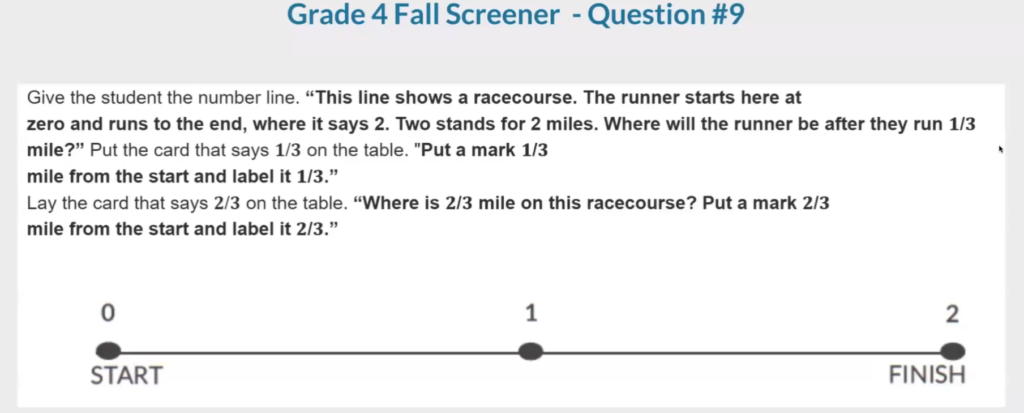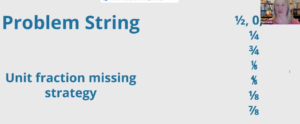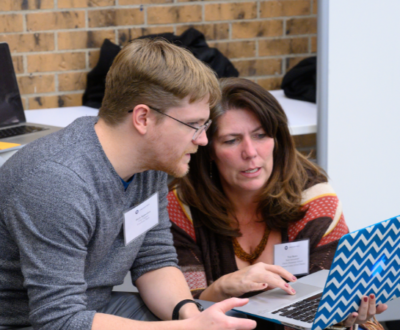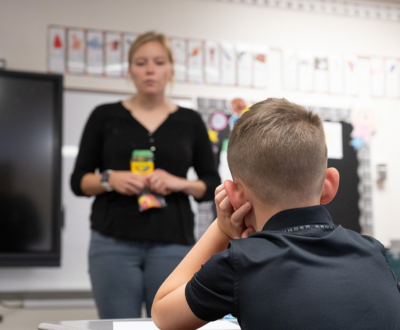Teaching for Number Sense
- August 14, 2023
- Blog

Forefront Education founder and lead author of the Universal Screeners for Number Sense (USNS) Project, David Woodward, presented with Pam Harris, founder of MathisFigureOutAble, author, lecturer, and a mathematics teacher educator in August 2023. The below post shares highlights of their conversation about three key takeaways from USNS 2022-23 data and number sense teaching strategies for K-6 teachers.
The Importance of Mental Math
Since 2020, Forefront Education has hosted the K-6 Universal Screeners for Number Sense (USNS) project. Introduced in 2008 as the Boulder Valley School District (BVSD) Elementary Math Screeners, Forefront Education led updates to the assessment tool in 2020. Teacher-created and teacher-tested, these assessments help inform classroom instruction and identify struggling students across key number sense concepts and skills. You can download your free copy of these assessments here.
The USNS assessments have an interview-based component. The fall assessments are entirely interview-based. Students are given tasks from counting forwards and backwards, identifying numerals, and, according to their grade level, asked to compute sums, differences, products, and quotients. To keep assessments efficient and focused on students’ conceptual understanding, pen and paper are not provided during interviews. Understanding students’ mental math strategies is important for understanding their number sense development.
Why is mental math important? Pam Harris shares that math is more than getting answers to questions. Math is about reasoning, not just getting answers to problems. It is not about developing mathematical “answer-getting”, it is about developing mathematical reasoning. Even in the age of calculators, mental math is math. As Cathy Fosnot says, “Mental math does not mean you do it in your head. Mental math means you do it with your head!”
Strategy One: Addition and Subtraction
The first highlight from third grade fall assessments, which assess for second grade-level standards that students should already be proficient in as they begin third grade, were the following two problems:
45 + 19
50 – 24
For the first problem, 60% of students are ability to answer this problem without counting by ones and 27% of kids are not able to accurately solve this problem mentally. According to USNS results across K-6, subtraction problems are harder for students. For the second problem, only 47% can solve it correctly without counting by ones, another 13% can solve it when provided with a visual scaffold, but 40% of students cannot solve this problem successfully at the beginning of 3rd grade.
Pam Harris shared a sequence of problems that are related to help students make connections with what they already know. Called a problem string, it is a powerful teaching tool based on the idea that learning mathematics is about constructing relationships and connections. Participants ran through a sample problem string to understand the “over/under strategy” for addition, summarized in the visual below.
Strategy Two: Multiplication
In the spring of 4th grade, the USNS assessments provide students with the card: 37 x 4 = 148. Knowing this, they are asked, “How much is 36 x 4?”
“If you know 37 x 4 = 148, how much is 36 x 4?”
At the end of fourth grade, 63% of students are able to correctly solve this problem by subtracting 4, 10.5% try to use an algorithm mentally to answer this problem in working memory, and 26.5% are unable to solve 36 x 4 after being told that 37 x 4 is 148.
To help students understand multiplication, Pam guided participants through a ratio table. Pam presented a problem string for multiplication and showed how a ratio table can be used to help student build on current knowledge to apply an over/under strategy for multiplication.
Strategy Three: Fractions
What makes fractions so difficult? The understanding of fractions at the end of fifth grade is very predictive of a student’s later mathematics performance. One reason they are so difficult, is that they are significantly more complex and build on (or perhaps reorganizing) previous understanding about additive and multiplicative concepts.
At the beginning of fourth grade, students are presented with the following task:
The results from 2022-23? Only 29% of students accurately placed both fractions on a number line and a full 63% of students are not placing those fractions between 0 and 1.
To help teach fractions, Pam Harris shared a number string called a unit fraction missing strategy. This strategy forces students to reason about fractions and their relative sizes. When students can reason with fractions, they understand them. Teaching students to think about, and think with fractions is the key to learning the meaning of fractions. Using number line activities like Pam’s fraction missing strategy can engage students in thinking about fractions in ways that lead to conceptual understanding.
Want to Learn More About Their Work?
The insights shared by Pam Harris and David Woodward offer a fresh perspective on math instruction. These experts advocate for moving beyond traditional methods and nurturing a deeper understanding of mathematical concepts. The strategies and tools they advocate for, like the problem string and developmentally-appropriate assessment for elementary students, provide educators with practical ways to improve student learning.
If you are eager to explore further, here are some ways to delve into the expertise of Pam Harris and David Woordward:
- Download the free K-6 Universal Screeners for Number Sense (USNS) assessments from the USNS Project page. Sign up for a free webinar on August 22nd at 3 pm EST to learn how to use these assessments with your students.
- Explore Forefront’s assessment data solution by viewing a demo or requesting a free sandbox account.
- Join Pam Harris for the free “You Can REACH More Students” Math Challenge to gain more teaching strategies August 23-25th at 8 pm EST. Learn more and register here.
- Listen to the Math is Figure-Out-Able podcast with Pam Harris and Kim Montague or join #MathStratChat on Twitter for weekly conversations about math teaching strategies.
- Building Powerful Fractions is an online workshop from Pam Harris, coming January 2024, to help teachers build instructional routines around teaching fractions.
About us and this blog
Our team and tools help schools implement standards-based grading, streamline assessment systems, and use meaningful data to drive decision-making.
Access Your Free Copy
Join over 9,000 schools using the Universal Screeners for Number Sense (USNS) assessments and download your free copy of the USNS assessment guide today.
More from our blog
See all postsForefront is the only assessment data solution optimized for classroom assessment results, leveraging these results to fuel instruction, PLCs, and grading. Elevate meaningful assessment data district-wide to transform how you understand and communicate about student learning across your schools.
Copyright © 2025 Forefront Education, Inc. All Rights Reserved.











